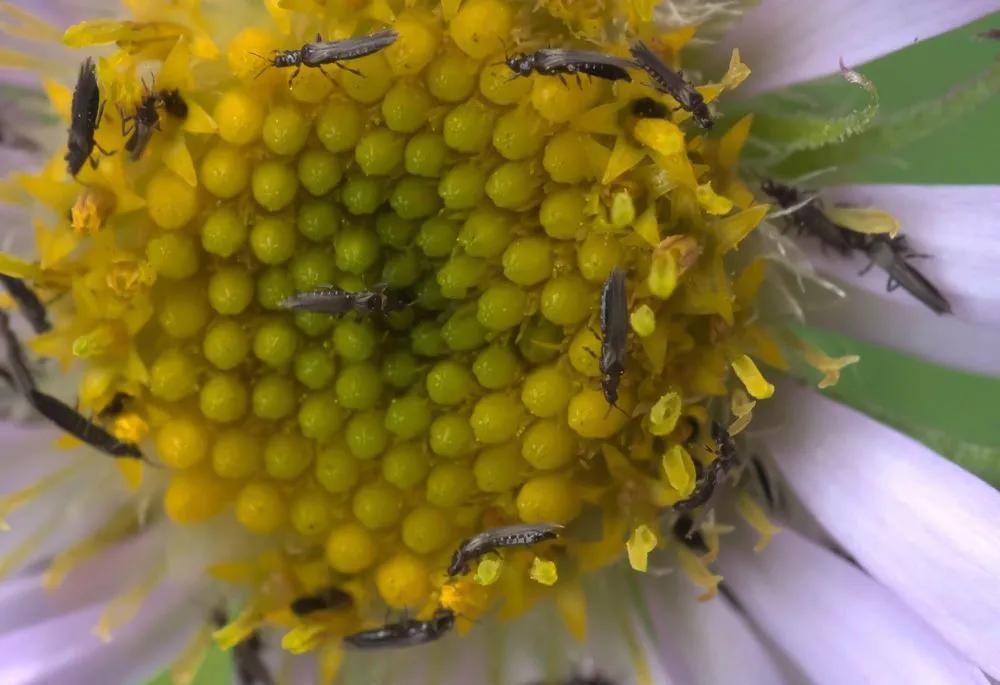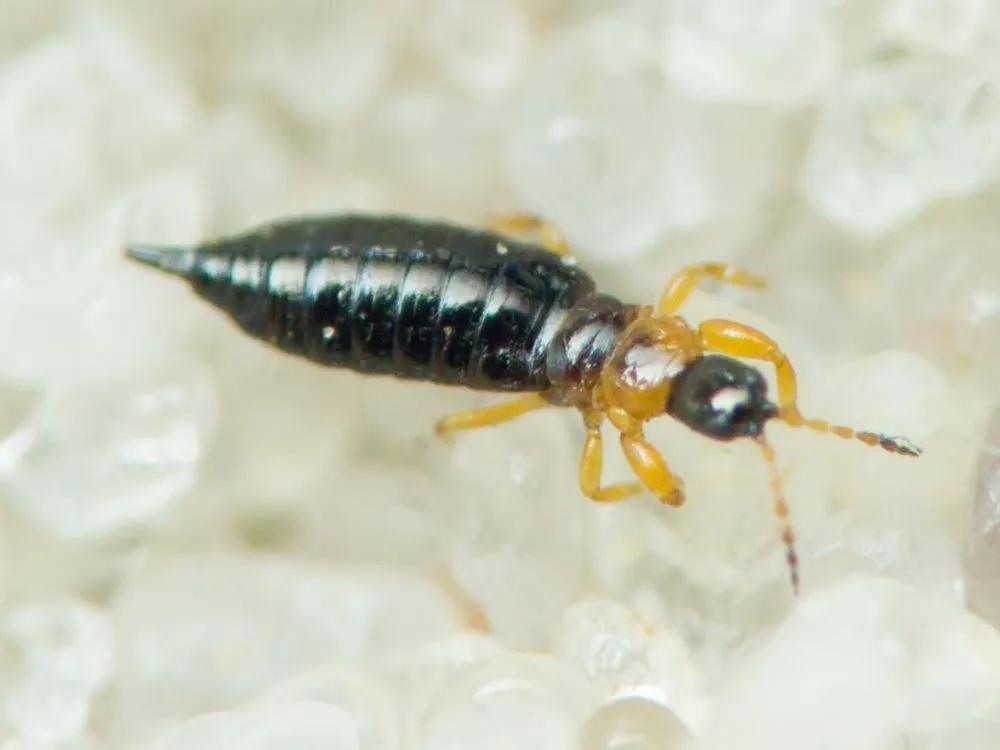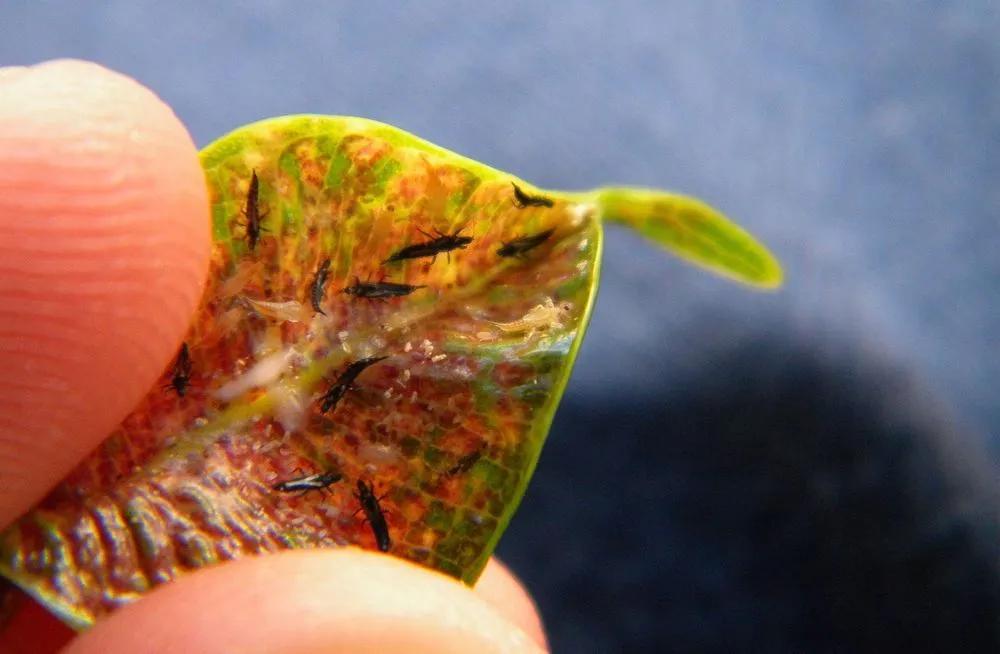Thysanoptera is an order of insects commonly known as thrips, which roughly means "wood grub". This name derives from the fact that many species live in rotting wood and feed on fungi and some leafy plants. These are tiny, slender creatures with long, thin bodies and fringed wings. They are characterized by their unique asymmetrical mouthparts that pierce and suck, which scrape and grind plant tissue. Thrips introduce a tubular structure into plant tissue and suck all cellular fluids. There are more than 6000 known species distributed across the globe; they're considered agricultural pests and have a major economic impact. This is aggravated by the fact that they may also serve as vectors for viral diseases. The presence of thrips isn't always an indicator of harmful activity, as some species have important roles as pollinators and don't feed on plants.
Thysanoptera



Signs of damage
Symptoms will depend on species and host:
- Galls. Abnormal swelling outgrowths of tissues that resemble a wart-like structure.
- Wilting and discoloration of leaves. Affected areas will show small dark spots that result from excremental fluids.
- Leaf silvering. Spreading silver-colored dust across the leaves.
- Leaf distortion.
- Necrosis.
- Leaf, fruit, and flower falling.
- Marble or net-like dried patterns across fruits.
- Transmission of viral diseases. These insects are known for being vectors of tospovirus.
How to prevent
This issue is difficult to control, but monitoring and employing good care practices and catering plants' needs help reduce the incidence risk. The presence of natural enemies and predators is a natural way to control these populations, but insecticides can also be used preventively.
To tackle the early stages of these insects' spread, they can be removed by branch beating or gently shaking plants' foliage onto a light-colored paper or cloth to kill them and free plants from their presence. Galled parts should also be pruned.
Heal
Remove damaged parts and employ non-toxic insecticides.
Keep in mind that some of the damage your plants are displaying might not be from thrips but from a subsequent viral disease. This is important for choosing an adequate healing strategy since some viral diseases don't have a cure.
Go Premium to continue reading
Also you’ll get unlimited access to disease identification and all the other beneficial features
More problems
